Changing your car battery definitely isn’t something that you look forward to or even plan to do in advance, because most of the time, it simply catches you by surprise. It’s not like changing tyres, where you get to physically inspect the tread wear and have them replaced at the time of your own choosing.
Most modern cars these days don’t even show obvious signs of battery weakening. You just wake up one morning and realise that your car would not start. Sure, getting it replaced under those circumstances is quite an inconvenience, but it is part and parcel of vehicle ownership – you guys know the drill.
Now then, when it actually comes down to changing your car battery, how do you choose the right one for your car? If you like being able to choose between brands, then what are the things that you should look out for? What does CCA mean, and what do all the alphanumeric codes stand for? There are several factors to consider and many brands to choose from, so let this piece be your guidebook.
Wet vs dry cell batteries
The first thing to know is there are two types of car batteries in general – wet cell and dry cell batteries. The main difference between them is maintenance. Wet cell or conventional batteries require periodic topping up of electrolytes or battery fluids. Older drivers will remember having to unscrew multiple caps on top of the battery to refill these fluids once every few months, but younger drivers may never know such batteries even existed.
That’s because most modern cars these days are fitted with dry cell batteries, more commonly marketed as maintenance free or zero maintenance batteries. As the name implies, these batteries require no maintenance whatsoever. It will just work until it eventually dies, which is typically between two to three years. Sometimes you get more, sometimes less – luck of the draw, they say.
The key point is that maintenance free batteries usually cost more than wet cell types, but the convenience of not having to top up fluids more than makes up for that. In fact, it has already become the industry standard.
JIS or DIN type batteries
Now, let’s dive a little deeper. Again, in general, there are two battery standards, JIS (Japanese Industrial Standard) and DIN (German Industrial Standard). JIS-type batteries are most commonly found in Japanese or Malaysian branded cars, but there are a few exceptions.
Geely-based Proton models like the X50 and X70 are equipped with DIN-type batteries. Several European-centric Japanese cars also use DIN units, like the Toyota Supra and Honda Civic Type R. Korean cars also sit in the middle – certain older models run JIS batteries, while most newer ones use DIN batteries. European cars, on the other hand, all use DIN-type batteries.
If you think JIS and DIN batteries are interchangeable, you’re wrong. You cannot, for instance, swap a 55D battery for a DIN55 unit, because their designs are different. For one, JIS batteries have their terminals stick out on top of the battery, whereas DIN batteries have their terminals recessed. The picture above clearly shows this.
JIS battery specs
One way to know exactly what type of battery you have in your car is to look at the code. An example of a JIS-type battery is 46B24L. Here, the number 46 refers to the battery’s starting cranking power and capacity, so the higher the number, the greater its cranking ability.
The letter B that follows refers to the battery’s physical size, with B being bigger than A, and C bigger than B. The second set of numbers, which is 24 in this case, denotes the length of the battery in centimetres.
Finally, the letter L at the end indicates the position of the positive terminal. L stands for left, and R means right. Some batteries come with an additional S lettering (46B24LS), but that simply refers to the terminal sizes. S here means standard size, so the terminals are fatter, thus requiring larger terminal leads. This larger terminal size is becoming increasingly more common among newer cars.
An important thing to keep in mind is to make sure whether your battery specs is L or R. This is crucial because in most cars, the battery compartment is very tight and the leads are short, so you can’t flip the battery around and pull the leads over. There are space constraints to look out for, so if you get a battery that is too big, there is a chance it won’t fit.
Again, as an example, a Proton Saga uses a 46B24RS battery, while a Perodua Bezza uses a 38B20L battery. The capacity, size, and terminal positions are all different between the two, so it’s imperative that you get the model codes right.
DIN battery specs
Next up are DIN type batteries. It’s actually much simpler, because the codes we usually see – DIN55 and DIN74 – are already the simplified versions of the battery model. Again, the numbers correspond to the overall performance rating of the battery, with the higher being better. The L or R lettering at the end also dictates the terminal positions.
Some, though not all battery brands show more detailed specifications of the battery, either on the box or the case itself. Amaron batteries, for example, show AH, CCA and RC ratings, which are the three most common specifications to look out for when replacing car batteries.
AH stands for amp-hour. It’s the measurement of the battery capacity and how much energy that can be stored in it. CCA stands for Cold Cranking Amps, which indicates how much power the battery can deliver to start the engine. Lastly, RC stands for Reserve Capacity, which is a measurement of how long the battery can continue to provide power to the car.
The rule of thumb is to simply follow the recommended specs
If for some reason you’re unable to digest the information above, allow us to further simplify it for you. For the most part, all you need to do to choose the right car battery model is to either look at the battery that’s already in your car and replace with the same one, or check your car owner’s manual and look for the recommended battery model.
Generally, you’ll want a new car battery that meets or exceeds your car manufacturer’s original specifications. Buy a battery that’s too weak and it just won’t last as long. Worse yet, the car might not even start. Even if it does work, there’s a real risk of causing long term damage to the electronics and the alternator. You don’t want your alternator to fail prematurely, trust us.
There’s another school of thought here in Malaysia, and that is to buy overspecced car batteries. The logic is that, if your car requires a DIN55 battery and you put in a DIN65 battery, that should be better, right?
With car batteries, that’s not always the case. Buying an overspecced battery may last a little bit longer, but going this route means you’re parting with more money, plus you risk putting extra load on your car’s alternator to charge up a bigger capacity battery than it was designed for. In an ideal scenario, you should also upgrade the alternator to a higher amperage unit to match the higher spec battery, but at this point you’ll be dolling out far more cash than necessary.
In the long run, the benefits of overspeccing your car battery is rather minimal, and you’re just better off using the recommended size battery. After all, if the car engineers say this is what the car requires, then who are we to say “no, you’re wrong, it needs a bigger battery!” Just stick with what has been recommended, you can’t go wrong that way.
EFB and AGM batteries
Cars with auto start-stop functions, such as the Perodua Myvi and Bezza Advance models will require higher-spec batteries that are designed specifically to cope with multiple start ups for the everyday drive. You technically can use a regular battery, but its lifespan will be severely shortened. For cars with auto start-stop, an EFB (enhanced flooded battery) is required.
Premium cars with both auto start-stop and regenerative braking functions, on the other hand, will need an AGM (absorbent glass mat) battery. This is a much, much more expensive type of battery, easily costing up to three times more than the price of a regular car battery. These typically last longer because they are built to higher standards, but again, just refer to the same battery model that’s already in your car, to be safe.
Choosing between the many brands
Once you’ve figured out the type of battery your car needs, the next step is to choose the right battery brand. In Malaysia, there are over 30 different brands to choose from, and the sheer number of choices alone can be daunting for some.
Let’s start with this. A car battery is one of the last few things on a car that you should skimp on. It’s like tyres on a car – you should always get the best tyres you can afford, because budget tyres can bite you in the butt in the long run.
The same applies for car batteries. The adage “you get what you pay for” truly applies here. Cheaper batteries may be kinder to your wallet in the beginning, but more often than not, their lifespan is comparably shorter, which means you’ll have to change batteries more frequently. Which would you rather pick, spending RM200 on a battery that would last one year, or spending RM300 on a battery that would last two years?
Beyond just dollars and cents, having a reliable battery also gives you that extra peace of mind. Having your car not start in the morning is like a nightmare coming true, so spending a little extra on a reputable car battery brand to minimise the risk of that happening is totally worth it, in our books.
Battery weight
Another factor that is less technical is battery weight. Unlike most things on cars, lighter isn’t always better. Making batteries that last a long time requires higher quality materials, and these typically necessitate the use of more materials.
If you happen to have two same battery models from different brands, the heavier battery is usually a clear sign of the quality and durability of the materials within. This may seem arbitrary, but the theory certainly has some weight to it.
Warranty
When it comes to car battery warranty, the industry standard is usually 12 months, for Malaysia at least. That’s because it’s hot and humid all year long, two key factors that are known to reduce the lifespan of batteries. In colder European countries, some battery manufacturers offer up to five years warranty!
Only recently have a few battery brands started offering more than 12 months of warranty in Malaysia. Some give you 18 months, others up to 24. That’s quite unheard of. Usually, the longer the warranty, the more confidence the brand has in its products.
In this regard, the car battery brand that offers the longest warranty in Malaysia is Amaron, with its 36-month warranty coverage. What’s even more interesting is their battery prices have not changed since 2016, so technically, you are getting an extra 24 months coverage for free.
Amaron claims that if the battery fails within the first 18 months, you will get a one-to-one free replacement. Beyond that, if the battery fails in months 19 to 36, the company will provide discounts on a replacement battery. Once you’ve fitted a new battery, the warranty resets itself to another 36 months of coverage.
Amaron also offers a straightforward self-registration system for its warranty programme. All you have to do is register your new battery on its mobile phone app, which is available on both Android and iOS devices. This makes any warranty claims much easier and more transparent than having to keep receipts or warranty cards like before. It also offers aftersales support through its network of sales and service centres located in major cities throughout West Malaysia.
So, that’s pretty much all the tips you need on how to choose the right car battery here in Malaysia. Once again, all you have to do is replace the same battery model that’s already on your car, and you don’t really have to worry about all the complicated numbers and codes on it at all. And when it comes to choosing the right battery brand, it all comes down to price, weight and warranty. You may watch the video version of this, below.
Looking to sell your car? Sell it with Carro.

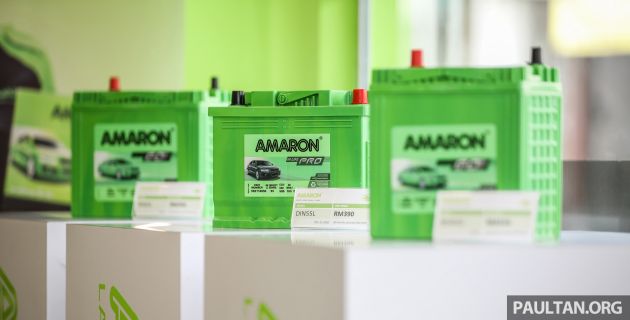


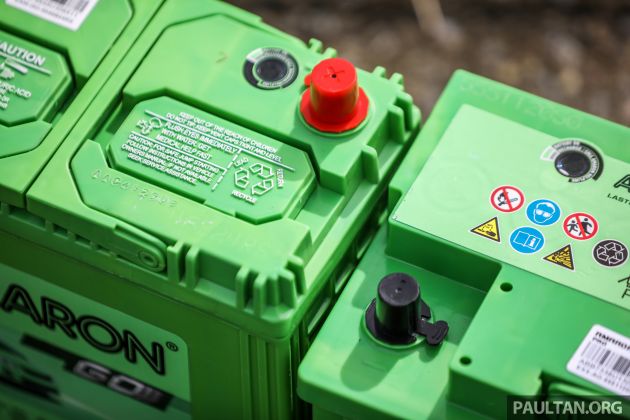



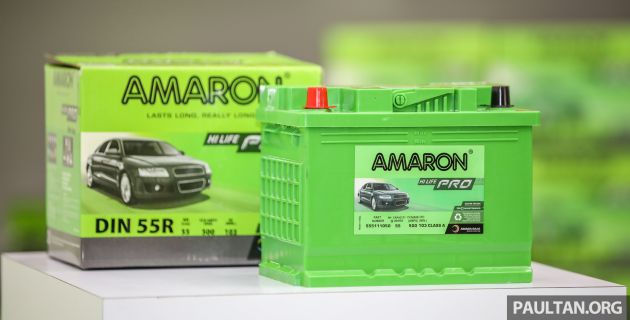
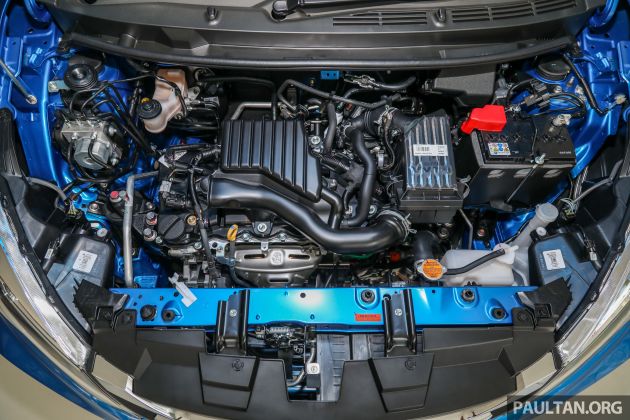


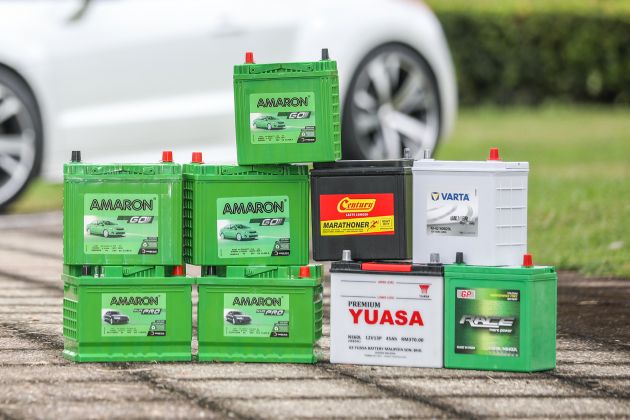


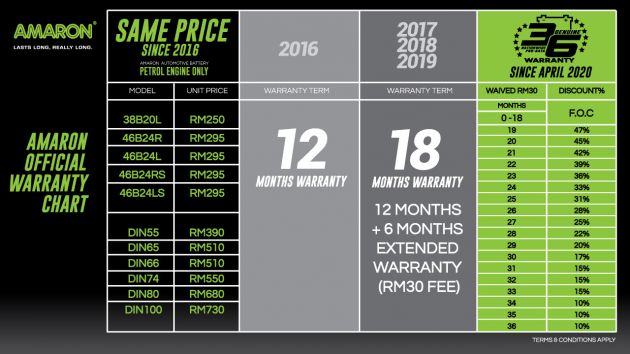
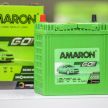
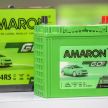
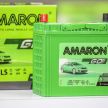
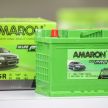
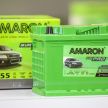
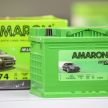
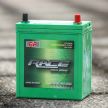
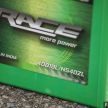
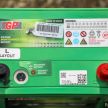

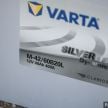
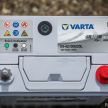
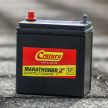
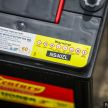
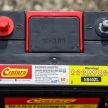
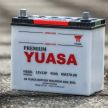
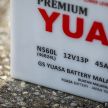
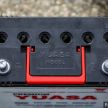
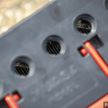
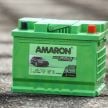
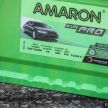
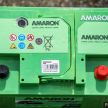
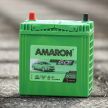
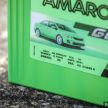
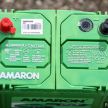
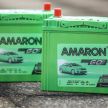
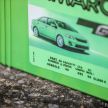
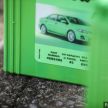
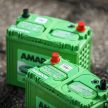
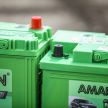
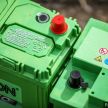
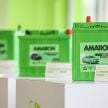
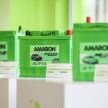
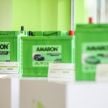
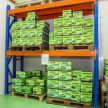
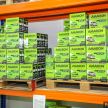
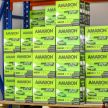
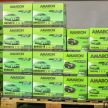
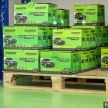
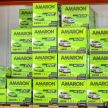

Amaron basically maintains the amount of lead used in car battery that it used to be while other manufacturer started to reduce them to cut cost and also having a shorter replacement period means making more money in a shorter time. Howevwer, lead is not something good for the environment and also human. Funny that nearly all electronics are no longer manufactured with lead (with exception on medical devices) but car battery still has plenty of it. Battery technology never really move forward as fast as other stuff.
Whatever the battery brands…. don’t forget mr.DIY black&red jumper cables in the car boot.
Thanks Matthew for the nice info. It is very informative, which most of us were not aware before. I have experienced using various brands (Bosch, Varta, Century, etc). Malaysia own brand like Century’s maintenance free batteries works well. It could last slightly over 2.5 years. Varta and Bosch last between 2 – 2.5 years. I haven’t tried Amarton (I will try next time). I had few times battery dying and left stranded at home luckily. So for me, as a preventive it will be safe to change the maintenance free battert at every 2 years.
Bro,
There is no dry cell.
It’s call as Maintenance Free battery (MF Battery)
Normal antimony battery is using Vent Plug while MF battery is using Vent Strip which close to 90% and above evaporate will drop back into individual cells so that you no need to refill.
This type of battery contain of calcium too
What you said is accurate, but in the market that’s what they are referred to: dry cell (doesn’t require fluid refills) as opposed to wet cell batteries.
The closer words we can use is MF Battery (to be more accurate).
In automotive manufacturer the meaning or dry cell battery which mean that normal antinomy lead battery sold in the market you just need to put in the acid and charge for 2 hours again then can plug into the car.
While those antimony came with acid inside the battery, we called it as wet charge.
Beside the number of plates (+be and -ve) in each individual cells also given diff of CCA too (on Top of thickness of the plate too).
Example in the market we can see some brand sell the 46B24(NS60 model) with 11plates/12plates/max 13 plates per cell.
More plates doesn’t mean long last and powerful, it’s consume more sulphuric acid. Beside Malaysian weather are too hot so be smart when you all choose it…
It’s a fantastic and unique knowledge for automotive battery after spending years as production planner and QC there. Even now the battery also contain of silver too, not just only antimony lead and calcium. But it’s a high pollution industry.
I am using dry cell 48v LifePo4 battery for almost 3 year now, it could outlasted the conventional dry sealed lead acid battery for many years.
Now I know Myvi & Bezza while cheap to buy, needs expensip battery replacements. Very regret buying Myvi for myself and Bezza for my wife. I hope I can trade in both after CNY.
How come Proton don’t have idling start stop like a BMW
I find auto start-stop functions to be super annoying. Used to turn it off every time I start my previous Mercedes C300. Perodua’s Eco-Idle is even more intrusive and incredibly annoying. The fuel savings are also minimal, so I wouldn’t consider cars not having it to be a fault at all.
if you love the environment,
Its a good care. Save the petrol, dinasaurs oil.
You don’t save the environment if you have to constantly replace toxic batteries.
Don’t be fooled by the “eco-idle” marketing name.
The fuel consumption difference is minuscule in the real world. That function was designed mainly to “game” the standard emissions and fuel economy tests in global markets. Outside lab tests, they make little to no difference.
Basically Japan’s version of Dieselgate except for petrol engine and they declared such system beforehand.
Same here, I disable the function every time I started the car..
Yup, it just ruins the driving experience be it what car u drives. Its been a relaxing drives until u come to a stop then wants to move again that small shake from the engine starting is just as annoying as seeing a que jumper cuts in front of u.
That and the unnecessary wear and tear plus wet armpit on certain model.
EFB is quite new(compared to the classic Lead Acid battery), none of the local manufacturer has the technology to manufacture this. of coz, things will get more expensive as there is no fierce competitions.
Whats the point for perodua making cars cheap to buy but expensive to maintain? I thought they were supposed to be the peoples car?
many gòod batteries around these days. the problems are too many ppl kn the middle taking comission.
from importer to distributor, to outlet dealers, and breakdown mechanics.. and therefore making the prices high.
Are you sure you talking the right thing? Do you know the grow margin of battery is less than 30%? The nett profit could be somewhere 10% at best. Do you know battery is not good if store beyond 3 months and it required to recharge if the voltage is below optimum for new battery?
The material cost goes up every year but the battery manufacture only jack up little bit. It is there are too many people like you don’t know anything but act like knowing the entire universal. People like you very scare the seller earn extra penny from you and make the business so hard to operate. If you thought battery business is good margin pls go operate one by yourself. If without volume and network I guarantee you tapau within 6 months time with small margin.
i use panasonic MF battery from honda and it last me almost 3 years. okla for the price of RM280 that i was charged, it is still reasonable to set aside about RM100 a year for battery replacement.
If it is an advertorial, please state upfront that it is one.
I have experienced Yuasa, Century, Amaron, Varta and Oem battery. So far only Century let me down. Not sure the unit i got is fake but it lasted slightly 1 year with same driving distance and area,bought it at a hypermart. Others will last more than 2 years.
Amaron and Varta seems to retain charge better than Yuasa but they all have been a loyal soldier everytime. They have a backup in the my trunk in form of a jumper cable made from welsing cable just in case.
what battery you use for your RCZ? brand and size?